Tired of the printed photo clutter? Check out these easy tips to organize print photos. You can easily organize your photos without a lot of time.
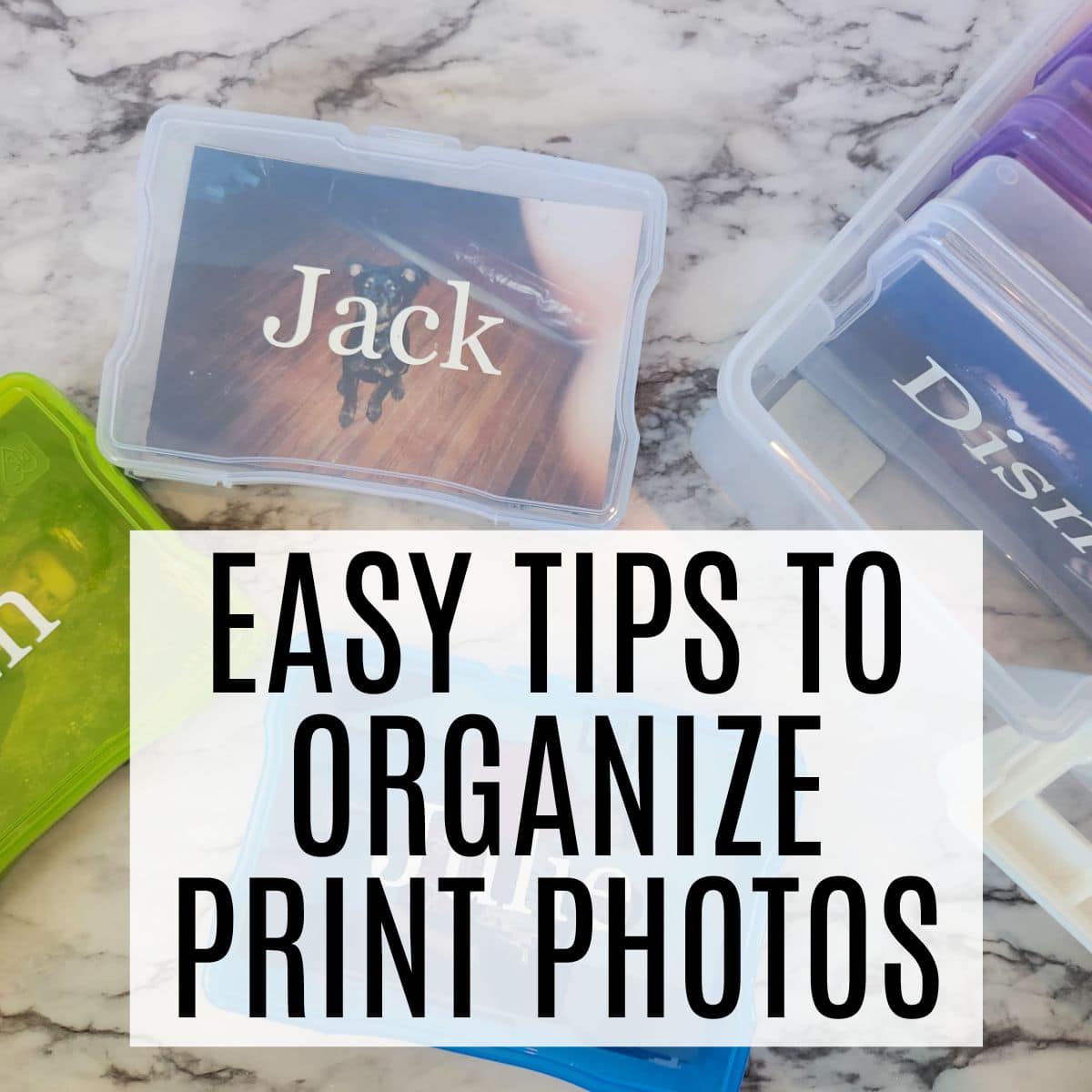
I remember when I was a kid, I loved getting pictures developed. Every year when we would go on vacation we would go through a roll of film and then get it developed when we got back.
Even when my husband and I got married, we took a regular camera on our honeymoon.
It wasn't until we had our son a couple of years later that we bought a digital camera.
Now we never even use the camera. We just pull out our phones and take a picture.
Because of this, we rarely get pictures developed anymore and store most of them on the computer.
Besides scrapbooking a few of our vacations, most of our actual printed photos were just stored in shoe boxes or folders around the house. Recently, I wanted to get them a little more organized.
I wanted to find a way to neatly organize print photos without spending a lot of time separating or organizing them. After looking around, I found a perfect solution for organizing print photos.
If you are tired of pictures all-around your house and no order check out these easy tips to organize print photos.
Table of Contents
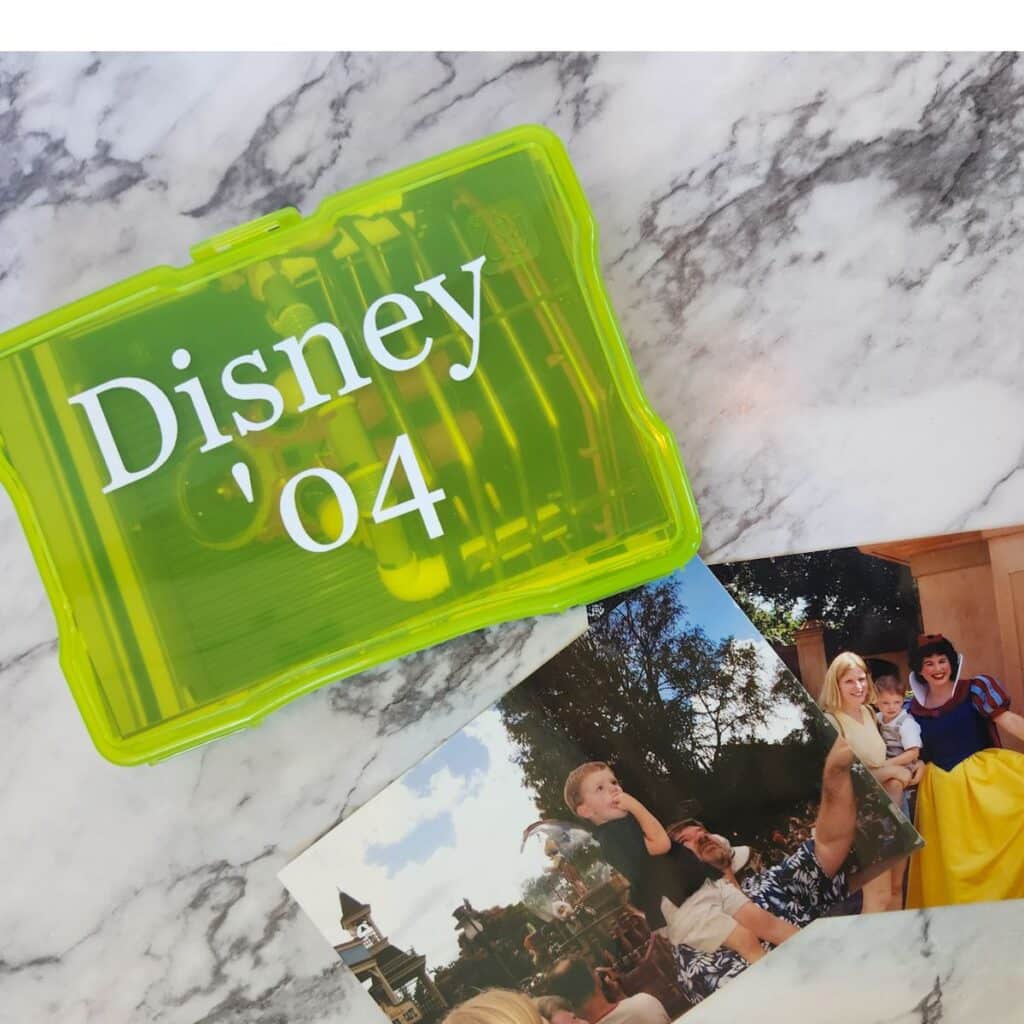
How To Organize Printed Photos
To organize your loose photos, I recommend a few things.
- Time to declutter
- Bins to store the photos in
- Acid-free way to label photos (Amazon has great pens)
The container store has these great acid free craft and photo storage containers. You can also pick them up from Amazon if you don't have a container store nearby.
You can get them in different sizes and colors, but I picked up a larger bin that has 12 colored containers. I liked them because each container inside was large so it could hold a lot of photos, plus because they are acid-free I don't need to worry about my pictures being damaged.
If you don't need something as sturdy as plastic, you could also use this box and envelope system from Amazon. It would be great to use if you want to store your pictures in drawers or in a cabinet.
Declutter The Photos
I highly recommend you start by decluttering your old photos. The next question is how are you supposed to decide on which ones to toss?
Blurry, duplicates, or pictures you know you don't want, need to be trashed. If you can't bring yourself to throw them away, make a stack that your family may want.
While you are browsing through the pictures, know that if they bring you joy you should definitely keep them. Think about if you would like them displayed or in an album that guests can look at. Sometimes this can make the decluttering decision easier if you are having trouble deciding.
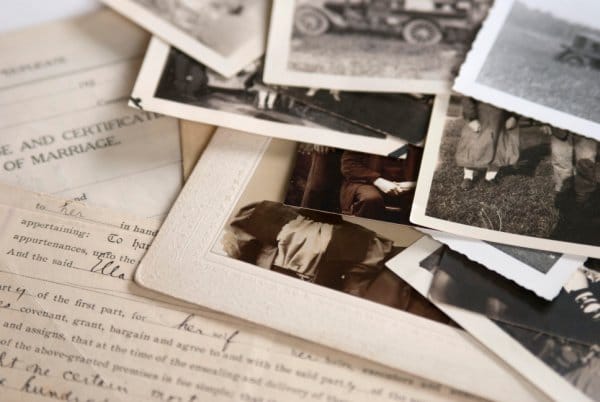
Sort The Printed Photos Into Groups
After you declutter all the photos, you don't want to keep then take all the loose pictures you have and sort them into groups.
There are a few ways you can do this.
With our pictures, each family member got their own container plus I did some for vacations, pets, and a few weddings we were in.
I preferred to sort them into larger groups to make the sorting easier and because the containers store a lot of pictures.
However, if you are using smaller envelopes or have a lot of pictures you may want to organize them into smaller categories.
Another way to go about organizing printed photos is sorting them by year. This is an easy way if you are just dealing with a few years worth of photos.
If you are dealing with 30-plus years of photos, it may be harder to sort them into years.
You can choose a way that works best for the photos that you have.
Organizing the printed photos into groups takes the most time, but can also be fun. I had a good time looking through all of our photos.

DECLUTTERING CHECKLIST
Label The Photos
There are a few different ways to label the photos. You can label them by writing on the back of the photo or you can just label the containers you put them in.
If you label the printed photos do so safely so you don't damage them. You can buy acid-free pens so they don't damage the photos on Amazon.
Or, instead of labeling all the pictures, you can just label the container or envelope. I really didn't want to take the time to label each picture. Because I was organizing the printed photos by person I didn't really feel like I needed to label them. For the vacations, I did where we went and the year we went.
Since you just need to label the container it really goes quick.
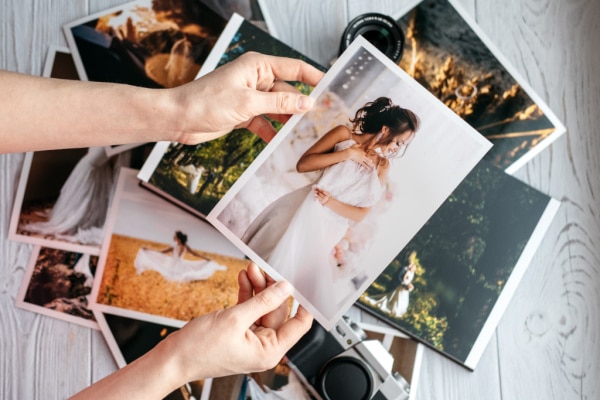
Organize The Photos Into Containers
Once you have all the photos organized and labeled then you can put them in the containers that you bought.
This is the quickest and easiest part of the whole process. You really just need to make sure you have enough containers for all of your different categories.
I recommend having a couple of extra containers or envelopes so you can add new groups if you need to. You don't want to have to come up with a new system if you decide to add more pictures or a new category.
The container I use just sits on a shelf in my office. It is so easy to just add a new picture to one of the bins when we get one. Plus, if my kiddo needs a picture for a project it is easy to find exactly what he needs.
With these easy tips to organize print photos, I was able to sit down in an afternoon and organize and label all of our photos. If you want to keep your photos in great shape and have them organized this system is a great way to do it.
Digitizing Photos
Some don't like the idea of organizing their printed memories in boxes that will never be displayed. A better option may be having them digitized.
What Does Digitizing Photos Mean?
Digitizing photos involves converting physical photos into digital files that can be stored and viewed on a computer or other digital device. There are several different ways you can convert them.
One way is having a service do it for you. ScanMyPhotos is a service that will take your photos and digitize them for you.
Get 35% Off at ScanMyPhotos when you use the code SMP35How to Convert Printed Photos to Digital
There are many services and companies out there that specialize in this process, but you can also take the DIY route by following these steps.
- Choose a scanner: You can use a flatbed scanner or a specialized photo scanner (Amazon has some starting fairly inexpensively) to digitize your photos. Photo scanners are designed to produce high-quality scans and can be a good option if you have a large number of photos to scan.
- Clean your photos: Before scanning your photos, it's a good idea to clean them with a soft brush or cloth to remove any dust or debris that could show up in the scan.
- Set up the scanner: Follow the instructions for setting up your scanner and connecting it to your computer.
- Scan the photos: Place your photos on the scanner bed and use the software that came with your scanner to scan them. Be sure to select the appropriate settings for the type of photo you are scanning, such as color or black and white.
- Save the digital files: Once the photos have been scanned, you can save them as digital files on your computer. Choose a file format that is compatible with the software you will use to view and edit the photos, such as JPEG or PNG.
- Edit and organize the digital files: You can use photo editing software to adjust the brightness, contrast, and color of your digital photos. You can also organize your digital files into folders and tag them with keywords to make them easier to find.
If you run into issues with photo storage on your computer or phone, Dropbox and Google Drive are excellent and affordable solutions.
Common FAQs
It is generally not recommended to store photos in Ziploc bags for long-term storage.
While Ziploc bags can provide some protection from moisture and dust, they are not designed to protect photos from other factors that can cause damage over time, such as light, heat, and acidity.
These bags are also made from materials that can release chemicals over time, which can cause photos to deteriorate and become discolored.
This storage method can also cause the photos to stick together or stick to the plastic, which can cause damage when you try to separate them.
If you need to store photos in plastic bags, it's important to choose bags that are specifically designed for archival storage, such as polyethylene or polypropylene bags.
These types of bags are acid-free, moisture-resistant, and won't release chemicals that can damage your photos over time.
Ideally, photos should be stored in archival quality materials such as acid-free photo albums, boxes or envelopes, or stored digitally in multiple locations.
Organizing and labeling those loose photos has never been easier. It's simple to do and once you are done you will be so glad you did it.


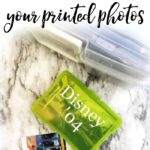
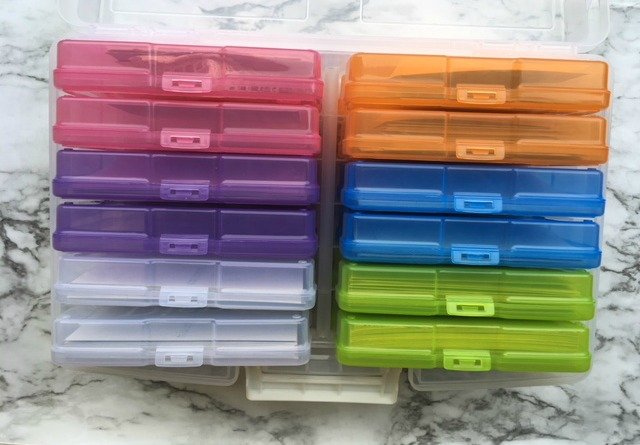
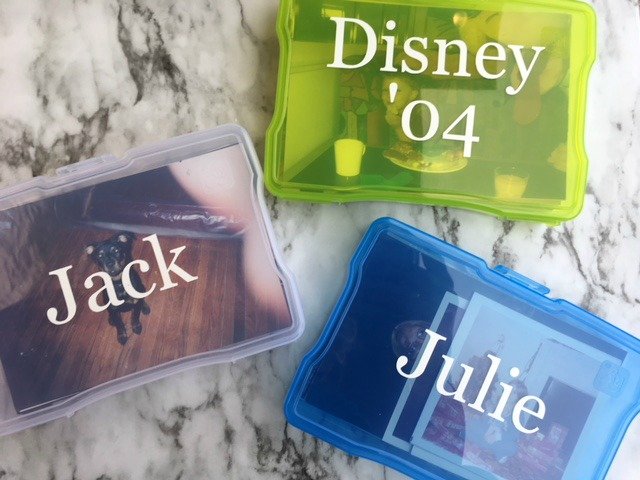
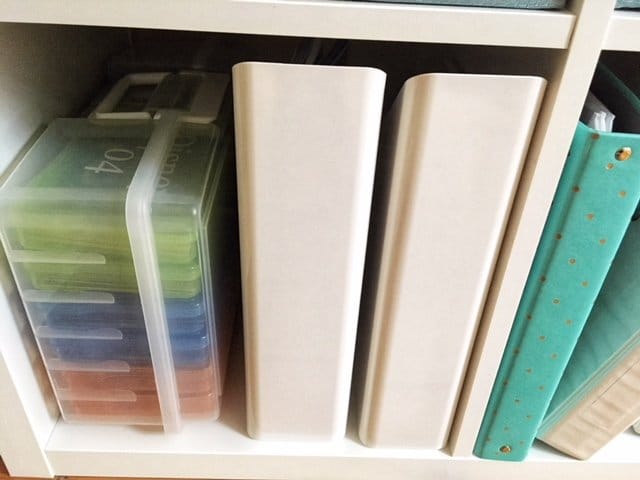
Cindy says
Great tips on photo organization. Do you have any tips for organizing digital photos?
Julie says
I am just getting started on organizing my digital photos. I hope to have an article out soon giving some ideas!